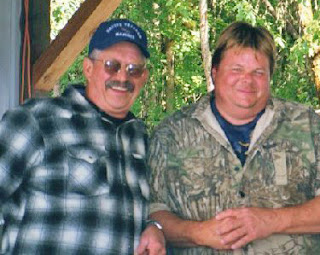
Oyster is the common name for a number of different families of salt-water bivalve molluscs that live in marine or brackish habitats. In some species, the valves are highly calcified, and many are somewhat irregular in shape. Many, but not all oysters, are in the super
family Ostreoidea.
Some types of oysters are commonly consumed (cooked or raw), and in some locales, they are regarded as a delicacy. Some types of pearl oysters are harvested for the pearl produced within the mantle. For instance, Windowpane oysters are harvested for their translucent shells, which are used to make various kinds of decorative objects.
Etymology
The word oyster comes from Old French oistre, and first appeared in English during the 14th century. The French derived from the Latin ostrea, the feminine form of ostreum, which is the latinisation of the Ancient Greek ὄστρεον (ostreon) 'oyster'. Compare ὀστέον (osteon) 'bone'.
Types
True oysters
True oysters are members of the family Ostreidae. This family includes the edible oysters, which mainly belong to the genera Ostrea, Crassostrea, Ostreola, Magallana, and Saccostrea. Examples include the European flat oyster, eastern oyster, Olympia oyster, Pacific oyster, and the Sydney rock oyster. Ostreidae evolved in the Early Triassic epoch: The genus Liostrea grew on the shells of living ammonoids.
Pearl oyster
Almost all shell-bearing mollusks can secrete pearls, yet most are not very valuable. Pearls can form in both saltwater and freshwater environments.
Pearl oysters are not closely related to true oysters, being members of a distinct family, the feathered oysters (Pteriidae). Both cultured pearls and natural pearls can be extracted from pearl oysters, though other molluscs, such as the freshwater mussels, also yield pearls of commercial value.
The largest pearl-bearing oyster is the marine Pinctada maxima, which is roughly the size of a dinner plate. Not all individual oysters produce pearls naturally.
In nature, pearl oysters produce pearls by covering a minute invasive object with nacre. Over the years, the irritating object is covered with enough layers of nacre to become a pearl. The many different types, colors and shapes of pearls depend on the natural pigment of the nacre, and the shape of the original irritant.
Pearl farmers can culture a pearl by placing a nucleus, usually a piece of polished mussel shell, inside the oyster. In three to seven years, the oyster can produce a perfect pearl. Since the beginning of the 20th century, when several researchers discovered how to produce artificial pearls, the cultured pearl market has far outgrown the natural pearl market.
Other types
A number of bivalve molluscs (other than true oysters and pearl oysters) also have common names that include the word "oyster", usually because they either taste like or look somewhat like true oysters, or because they yield noticeable pearls. Examples include:
- Thorny oysters in the genus Spondylus
- Pilgrim oyster, another term for a scallop, in reference to the scallop shell of St. James
- Saddle oysters, members of the Anomiidae family also known as jingle shells
- Dimydarian oysters, members of the family Dimyidae
- Windowpane oysters
Anatomy
Oysters breathe primarily via gills. In addition to their gills, oysters can exchange gases across their mantles, which are lined with many small, thin-walled blood vessels. A small, three-chambered heart, lying under the adductor muscle, pumps colorless blood to all parts of the body. At the same time, two kidneys, located on the underside of the muscle, remove waste products from the blood. Their nervous system includes two pairs of nerve cords and three pairs of ganglia. There is no evidence that oysters have a brain.
While some oysters have two sexes (European oyster and Olympia oyster), their reproductive organs contain both eggs and sperm. Because of this, it is technically possible for an oyster to fertilize its own eggs. The gonads surround the digestive organs, and are made up of sex cells, branching tubules, and connective tissue.
Once her millions of eggs are fertilized, the female discharges them into the water. The larvae develop in about six hours and exist suspended in the water column as veliger larvae for two to three weeks before settling on a bed and reaching sexual maturity within a year.
Feeding
Oysters are filter feeders, drawing water in over their gills through the beating of cilia. Suspended plankton and non-food particles are trapped in the mucus of a gill, and from there are transported to the mouth, where they are eaten, digested, and expelled as feces or pseudofeces that fall to the bottom and remain out of the water column. Oysters feed most actively at temperatures ranging from the high 60s to the high 70s. Under ideal laboratory conditions, an oyster can filter up to 190 L (50 US gal) of water per day. Under average conditions, mature oysters filter 11–45 L (3–12 U.S. gal). Chesapeake Bay's once-flourishing oyster population historically filtered excess nutrients from the estuary's entire water volume every three to four days. As of 2008 it was estimated that a complete cycle would take nearly a year.
Habitat and behavior
A group of oysters is commonly called a bed or oyster reef.
As a keystone species, oysters provide habitat for many marine species. Crassostrea and Saccostrea live mainly in the intertidal zone, while Ostrea is subtidal. The hard surfaces of oyster shells and the nooks between the shells provide places where a host of small animals can live. Hundreds of animals, such as sea anemones, barnacles, and hooked mussels, inhabit oyster reefs. Many of these animals are prey to larger animals, including fish, such as striped bass, black drum and croakers.
An oyster reef can increase the surface area of a flat bottom 50-fold. An oyster's mature shape often depends on the type of bottom to which it is originally attached, but it always orients itself with its outer, flared shell tilted upward. One valve is cupped and the other is flat.
Oysters usually reach maturity in one year. They are protandric; during their first year, they spawn as males by releasing sperm into the water. As they grow over the next two or three years and develop greater energy reserves, they spawn as females by releasing eggs. Bay oysters usually spawn from the end of June until mid-August. An increase in water temperature prompts a few oysters to spawn. This triggers spawning in the rest, clouding the water with millions of eggs and sperm. A single female oyster can produce up to 100 million eggs annually. The eggs become fertilized in the water and develop into larvae, which eventually find suitable sites, such as another oyster's shell, on which to settle. Attached oyster larvae are called spat. Spat are oysters less than 25 mm (1 in) long. Many species of bivalves, oysters included, seem to be stimulated to settle near adult conspecifics.
If you want to read a lot more, go here: https://en.wikipedia.org/wiki/Oyster
- 1 (8-ounce) package cream cheese, softened
- 1/2 cup sour cream
- 1 teaspoon oregano
- 1/2 cup pizza or spaghetti sauce
- 1 cup shredded mozzarella cheese
- 1/3 cup chopped pepperoni
- 1/4 cup sliced black olives
- 1/2 cup grated Parmesan cheese
- Preheat oven to 350º. Coat a 9-inch pie plate with cooking spray.
- In a medium bowl, combine cream cheese, sour cream, and oregano; stir until smooth and well blended. Spread mixture evenly into prepared pie plate.
- Top with pizza sauce, mozzarella cheese, pepperoni, and olives. Sprinkle with Parmesan cheese.
- Bake 10 minutes, or until cheese is melted.
****Serve with bread sticks, crackers and/or carrot, celery, and pepper sticks. And if you'd like to make a lighter dip, substitute the cream cheese, sour cream, and shredded mozzarella with their lighter versions.
1888 – Maurice Chevalier, French singer and actor (d. 1972)
1913 – Jesse Owens, American athlete (d. 1980)
1931 – George Jones, American country music singer (d.2013)
1940 – Linda Gray, American actress
National Chocolate
Milkshake Day on September 12th brings chocolate and ice cream lovers together. Forget the calories for just this one day and enjoy a sweet tall, thick and delicious, chocolate milkshake!
The term milkshake first appeared in print in 1885. During this period, milkshake referred to an alcoholic beverage described as a “sturdy, healthful eggnog type of drink” blended with eggs, whiskey, and other ingredients. Pharmacies served the drink as a tonic and a treat to customers. By 1900, pharmacies offered this “wholesome drink” with either chocolate, strawberry, or vanilla syrup.
- The early 1900s – People began asking for this “new treat” with a scoop of ice cream.
- 1911 – Hamilton Beach’s drink mixers began to be used at soda fountains.
- 1922 – Steven Poplawski invented the electric blender or drink mixer.
- Due to the invention of the blender, the milkshake began to take a chipped, aerated, and frothy form as they are today.
- By the 1920s & 1930s, milkshakes became a popular drink at malt shops everywhere.
Another addition to the milkshake was malted milk powder. Made from malted barley, wheat flour, and dehydrated whole milk, malted milk tastes a bit like toasted caramel. It made its debut around the 1870s as a shelf-stable dry milk product. Add the powder to a chocolate milkshake, and transform the creamy goodness into a malted chocolate milkshake. Along with milkshakes, malted milk milkshakes became popular drinks at soda fountains around the 1920s.
HOW TO OBSERVE
Enjoy a chocolate milkshake at your favorite restaurant or soda fountain.















